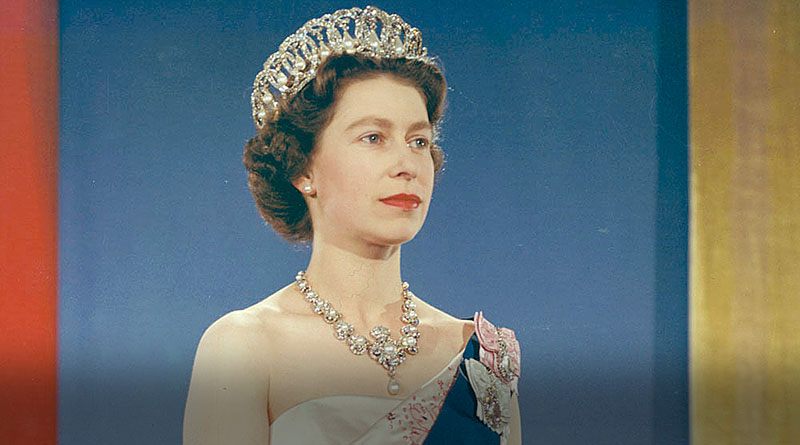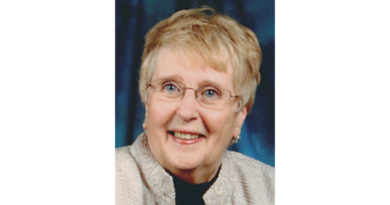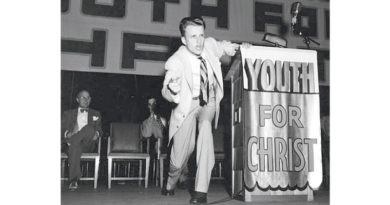Queen Elizabeth II 1926-2022
By Sue Careless
WHEN PRINCESS ELIZABETH was born on April 21, 1926, she was not expected to become Queen, let alone Britain’s longest-ruling monarch. True, she was third in the line of succession to her grandfather King George V after her Uncle Edward and her father Albert. But Edward was young and likely to marry and have children of his own so it was naturally assumed that Princess Elizabeth and her younger sister Margaret would remain life-long princesses.
All that changed for Elizbeth when she was only ten. When her grandfather died on Jan. 20, 1936, her uncle became King Edward VIII, but he abdicated just months later on Dec. 11, making Elizabeth’s father King George VI, and herself the heir presumptive.
She was heir presumptive rather than heir apparent because had a younger brother arrived, he would have succeeded his father to the throne, supplanting Elizabeth.
The two princesses were home-schooled. Elizabeth studied constitutional history with the vice-provost of Eton College, French with French and Belgian governesses and religion with the Archbishop of Canterbury.
When England entered the Second World War in 1939, it was suggested that the princesses should be evacuated safely to Canada to avoid the Luftwaffe’s aerial bombings of London but their parents would not hear of it. Instead, the girls were evacuated first to Balmoral Castle in Scotland and later to Windsor Castle just outside London for five years.
In 1940, the 14-year-old Elizabeth made her first radio broadcast during the BBC’s Children’s Hour, addressing other city children who had been evacuated to the countryside: “We are trying to do all we can to help our gallant sailors, soldiers and airmen, and we are trying, too, to bear our own share of the danger and sadness of war. We know, every one of us, that in the end all will be well.”
A year earlier, Elizabeth had been officially escorted around the Royal Naval College in Dartmouth by a handsome and accomplished cadet, Prince Philip of Greece. Elizabeth was just 13 but she fell in love with the dashing 18-year-old, and they began exchanging letters during the war.
Elizabeth begged her parents to let her take part in the war effort. Finally, when she turned 18, she joined the Auxiliary Territorial Service, the women’s branch of the British army, and trained as a truck and ambulance driver and mechanic.
Prince Philip proposed to Elizabeth in 1946 but her father wanted his eldest daughter to wait until her 21st birthday to make the official announcement. There were concerns that he was a penniless prince with no kingdom and no stable family. Some also considered him too German. Four of his sisters had married Germans and three of their husbands had joined the Nazi party.
But Philip had served with distinction in the British Navy and Elizabeth was adamant. Before the announcement, Philip abandoned his Greek and Danish titles and became a naturalized British subject. He had been baptized in the Greek Orthodox Church, but was received into the Church of England during their engagement.
Princess Elizabeth went on her first overseas tour in 1947, accompanying her parents through southern Africa. In a broadcast from Cape Town on her 21st birthday, she made the following pledge to the Commonwealth: “I declare before you all that my whole life, whether it be long or short, shall be devoted to your service and the service of our great imperial family to which we all belong.”
Philip married Elizabeth on Nov. 20, 1947 amidst much pomp and joy in an otherwise dreary postwar Britain, when rationing was still in place. The princess had saved 300 ration coupons to pay for the fabric for her wedding dress. She was 21 and he was 26.
And for the first five years of marriage Elizabeth enjoyed the relative privacy of being a naval officer’s wife. During this time Charles and Anne, the first of their four children, were born.
On Feb. 6, 1952, while the young couple was on a royal tour of Kenya, filling in for her ailing father, King George died.
Elizabeth ascended to the throne when she was just 25. Prime Minister Winston Churchill thought her but “a child” but she quickly won him over. She became queen of seven independent Commonwealth countries: the United Kingdom, Canada, Australia, New Zealand, South Africa, Pakistan, and Ceylon (now Sri Lanka), as well as Head of the Commonwealth.
The number of her realms varied over time as territories gained independence and some realms became republics. Britain’s once mighty empire upon which “the sun never sets” crumbled, but with Elizabeth’s encouragement and support, it has become a Commonwealth of 54 nations. It includes 2.5 billion people, more than a third of the world’s population. Many regard it as her greatest achievement.
Former Canadian Prime Minister Brian Mulroney said the abolition of apartheid and the establishment of majority rule in South Africa was a “signal moment in the life of the Commonwealth” and that it came about in large measure with “the unfailing encouragement and gentle but unerring guidance” of the Queen.
Elizabeth had a profound sense of religious and civic duty, and took her Coronation Oath seriously. On the day of her Coronation on June 2, 1953, she said: “When I spoke to you last Christmas, I asked you to pray for me on the day of my coronation–to pray that God would give me strength to carry out the promises I would then be making. Through all my life, and with all my heart, I shall strive to be worthy of your trust.”
Elizabeth reigned as a constitutional monarch through major political changes such as the Suez Crisis, the Troubles in Northern Ireland, devolution in the United Kingdom, the decolonisation of Africa, and the United Kingdom’s accession to the European Communities and withdrawal from the European Union.
The Queen met 13 US presidents, 12 Canadian prime ministers and five popes. She was the first monarch to visit every country in the former British Empire. She travelled to more than 100 countries and made 22 royal visits to Canada, more than any other nation. She was not always greeted warmly. In 1964, in Quebec City, separatists turned their backs on her or booed.
When the couple went on royal tours, even one that lasted six months, they left their children at home. In hindsight, it was probably not the best parental model.
On Oct. 21, 1966 an avalanche of coal waste buried a village school and 19 homes in Aberfan, Wales, killing 116 children and 28 adults. Philip visited the scene of the disaster immediately the next day but the Queen waited eight days, a delay which she later regretted immensely. When she did visit, it was one of the few occasions in which she shed tears in public. She made a point of returning several times in later years to the devastated community.
1992 was in the Queen’s own words an annus horribilis. During it the marriages of three of her four children fell apart and Windsor Castle went up in flames.
Elizabeth faced occasional republican sentiment and media criticism of her family, especially after the sudden death of her former daughter-in-law Diana, Princess of Wales, in 1997. The Queen had wished to mourn privately but the nation demanded a more public expression of grief.
In 2002 the Queen experienced two more personal losses: her sister Princess Margaret died at the age of 71, then two months later their mother Queen Elizabeth died at 101.
Her many state visits included China in 1986, Russia in 1994, and the Republic of Ireland in 2011. The latter was probably the most significant as an act of reconciliation, both personal and international as Philip’s uncle and Charles’ godfather, Lord Mountbatten, had been assassinated by the IRA in 1979. In a speech given in Dublin she said:
“It is a sad and regrettable reality that through history our islands have experienced more than their fair share of heartache, turbulence and loss…To all those who suffered as a consequence of our troubled past, I extend my sincerest thoughts and deepest sympathy.”
Later the Queen shook hands with Sinn Fein’s Martin McGuinness in a gesture of reconciliation between nationalists and unionists in the troubled Northern Ireland.
Her own marriage was an enduring one lasting 73 years. On their 50th wedding anniversary she said that Philip “…has quite simply been my strength and stay all these years.” He was a working royal who didn’t retire from his royal duties until he was 96. The prince died on April 9, 2021, just two months before his 100th birthday. The Queen described her husband’s death as “leaving a huge void” in her life. He had been her confidante.
But she soldiered on alone for the next 17 months, a working royal to the end. For about three hours a day she reviewed the official documents in the red box the government sent her. And when Parliament was in session, the prime minister had a private weekly audience with her. Each one appreciated that they could speak candidly with her as an intelligent, well-informed but nonpartisan figurehead. The fifteenth prime minister, Liz Truss, met with the Queen just two days before her death.
Scandal haunted the royal family but she was never part of it. Recently the Queen had to deal with her grandson Harry’s decision to leave his life and duties as a royal and live with his wife and children in California. And this past March her son Andrew paid an undisclosed sum to settle an underage sex-assault civil suit. Two years earlier the Queen had stripped him of his patronages and he had resigned his royal duties because of his close association with a convicted sex offender.
Losing three working royals in the last two years of her life meant even more work for the Queen and the remaining royals but she never faltered.
A personally reticent person, she had an easy smile and good sense of humour, was never pompous but with grace and dignity sought to put others at ease.
Aside from her official religious role as Supreme Governor of the established Church of England, she worshipped faithfully with that church and also the national Church of Scotland. She has likely worshipped in more dioceses in the Anglican Communion than even any Archbishop of Canterbury. She demonstrated support for inter-faith relations and met with leaders of other churches and religions.
A personal note about her faith often featured in her annual Christmas Message broadcast to the Commonwealth. In 2000 she said:
“To many of us, our beliefs are of fundamental importance. For me the teachings of Christ and my own personal accountability before God provide a framework in which I try to lead my life. I, like so many of you, have drawn great comfort in difficult times from Christ’s words and example.”
In her message in 2002, when she was 76, she declaired:
“I know just how much I rely on my faith to guide me through the good times and the bad. Each day is a new beginning. I know that the only way to live my life is to try to do what is right, to take the long view, to give of my best in all that the day brings, and to put my trust in God. I draw strength from the message of hope in the Christian gospel.”
Five years ago, when she was 91, she said:
“In my first Christmas broadcast in 1952 I asked the people to pray for me as I prepared to dedicate myself to their service at my Coronation. I have been and remain very grateful for [those] prayers and to God for his steadfast love, I have indeed seen his faithfulness.”
And we saw her faithfulness. On the last day of her 70-year reign she was head of state of 15 countries and patron of more than 600 organisations and charities.
On Sept. 8, Elizabeth II died peacefully surrounded by her family, in her beloved summer residence, Balmoral Castle in the Scottish Highlands. She was 96. She leaves her four children – Charles, Anne, Andrew and Edward; 8 grandchildren and 12 great-grandchildren. She had become a maternal and grandmotherly presence to most of her subjects, and to many in the world. Her eldest son who is 73, succeeds her as King Charles III.
The Queen’s last public statement was in her role as Queen of Canada, a message of condolence to “those who have lost loved ones in the attacks that occurred this past weekend in Saskatchewan. I mourn with all Canadians at this tragic time.”
And now just days later, we mourn her. TAP




